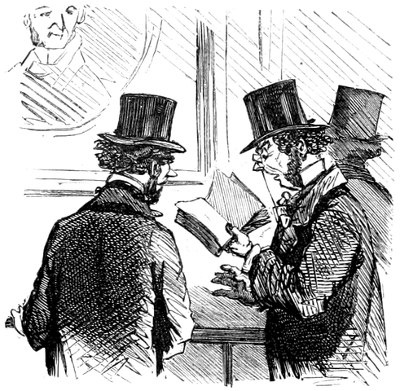
“You could compile the worst book in the world entirely out of selected passages from the best writers in the world.” — G.K. Chesterton

“You could compile the worst book in the world entirely out of selected passages from the best writers in the world.” — G.K. Chesterton
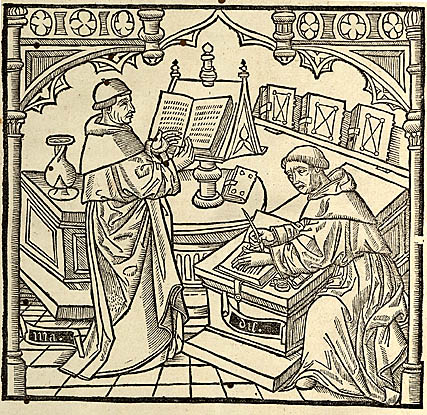
Notes left in manuscripts and colophons by medieval scribes and copyists, from the Spring 2012 issue of Lapham’s Quarterly:
New parchment, bad ink; I say nothing more.
I am very cold.
That’s a hard page and a weary work to read it.
Let the reader’s voice honor the writer’s pen.
This page has not been written very slowly.
The parchment is hairy.
The ink is thin.
Thank God, it will soon be dark.
Oh, my hand.
Now I’ve written the whole thing; for Christ’s sake give me a drink.
Writing is excessive drudgery. It crooks your back, it dims your sight, it twists your stomach and your sides.
St. Patrick of Armagh, deliver me from writing.
While I wrote I froze, and what I could not write by the beams of the sun I finished by candlelight.
As the harbor is welcome to the sailor, so is the last line to the scribe.
This is sad! O little book! A day will come in truth when someone over your page will say, “The hand that wrote it is no more.”
In her History and Uncertain Future of Handwriting, Anne Trubek lists another: “Here ends the second part of the title work of Brother Thomas Aquinas of the Dominican Order; very long, very verbose, and very tedious for the scribe.”
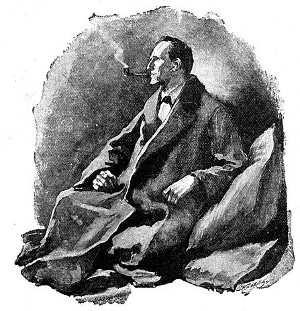
Arthur Conan Doyle in Tit-Bits, Dec. 15, 1900:
There is one fact in connection with Holmes which will probably interest those who have followed his career from the beginning, and to which, so far as I am aware, attention has never been drawn. In dealing with criminal subjects one’s natural endeavour is to keep the crime in the background. In nearly half the number of the Sherlock Holmes stories, however, in a strictly legal sense no crime was actually committed at all. One heard a good deal about crime and the criminal, but the reader was completely bluffed. Of course, I could not bluff him always, so sometimes I had to give him a crime, and occasionally I had to make it a downright bad one.
A footnote from Leslie Klinger’s New Annotated Sherlock Holmes, 2005:
Fletcher Pratt computes that by 1914, when the record of Holmes’s detective activities ceases, no crimes had taken place in one quarter of the total published cases. In nine of these cases, there was no legal crime. In six no crime took place because Holmes intervened in time to prevent its occurrence.
bibliopolist
n. a bookseller
cunctative
adj. slow; tardy; dilatory; causing delay
numquid
n. an inquisitive person
aliunde
adv. from elsewhere; from another source
[Edmund Law] had a book printed at Carlisle; they were a long time about it: he sent several times to hasten them; at last he called himself to know the reason of the delay. ‘Why does not my book make its appearance?’ said he to the printer. ‘My Lord, I am extremely sorry; but we have been obliged to send to Glasgow for a pound of parentheses.’
— Henry Colburn, Personal and Literary Memorials, 1829

This staircase near the library at Lebanon’s University of Balamand is painted to resemble a stack of classic texts:
The Epic of Gilgamesh
The Republic of Plato
Diwān Abū al-Tayyib al-Mutanbbī
Risālat al-ghufrān / Abī al-Alā al-Ma’arrī
The Divine Comedy by Dante Alighieri
Muqaddimah-i ibn Khaldūn
The Prince and the Discourses by Niccolò Machiavelli
Discourse on Method by René Descartes
The Critique of Pure Reason by Immanuel Kant
Faust by Goethe
The Origin of Species by Charles Darwin
The Brothers Karamazov by Fyodor Dostoyevsky
Thus Spake Zarathustra by Friedrich Nietzsche
The Meaning of Relativity by Albert Einstein
The Prophet by Khalil Gibran
al-Ayyām / Tāhā Husayn
A Study of History by Arnold Toynbee
Cosmos by Carl Sagan
A Brief History of Time by Stephen Hawking
Les Désorientés by Amin Maalouf
The Road Ahead by Bill Gates
This puts them (almost) in chronological order.
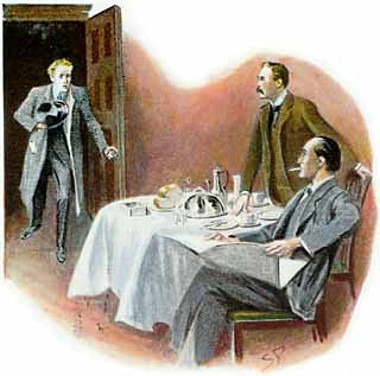
When does Sherlock Holmes eat breakfast?
In Sherlock Holmes Detected, Ian McQueen writes, “There are so many contradictions about breakfast-time that one hesitates to express a certain view; save possibly one, that Watson, ready as always to submit to his very human failings, was not very good at getting up in the mornings.” He quotes Ronald Knox: “Both in A Study in Scarlet and in The Adventures, we hear that Watson breakfasted after Holmes: in The Hound we are told that Holmes breakfasted late. But then, the true inference from this is that Watson breakfasted very late indeed.”
By the time of Holmes’ retirement, McQueen notes, Watson pays Holmes no more than “an occasional week-end visit,” since the detective now takes only an “early cup of tea” and favors clifftop walks and sea-bathing before breakfast. “Watson kept out of the way!”
Samuel Johnson used to boast that his memory was so prodigious that he could recite an entire chapter of Niels Horrebow’s 1758 Natural History of Iceland. When challenged he would declaim:
Chap. LXXII. Concerning Snakes
There are no snakes to be met with throughout the whole island.
That’s it. Editor George Birkbeck Hill adds, “Chapter XLII is still shorter:–
Concerning Owls.
There are no owls of any kind in the whole island.

During World War II the poet Robert Lowell refused to register for the draft and spent a few days in the West Street Jail next to mobster Louis “Lepke” Buchalter.
Lepke told him, “I’m in for killing. What are you in for?”
Lowell said, “I’m in for refusing to kill.”
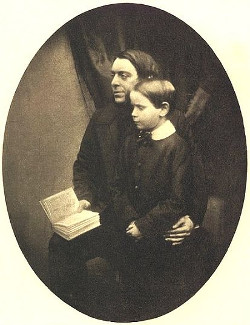
On Sept. 21, 1849, naturalist and explorer Philip Henry Gosse wrote in his diary:
E. delivered of a son. Received green swallow from Jamaica.
The son grew up to be poet, author, and critic Edmund Gosse, who wrote:
“This entry has caused amusement, as showing that he was as much interested in the bird as in the boy. But this does not follow; what the wording exemplifies is my Father’s extreme punctilio.
“The green swallow arrived later in the day than the son, and the earlier visitor was therefore recorded first; my Father was scrupulous in every species of arrangement.”

In 1973 Anthony Burgess lost a book manuscript to a scippatore, a thief on a Vespa.
He was living in Rome and working on Joysprick, his study of the language in Finnegans Wake. “I carried it in its Gucci case towards a Xeroxshop to be copied, but it was scippato on the way.”
He was remarkably philosophical about the loss. “The typescript was presumably fluttered into the Tiber or Tevere and the case sold for a few thousand lire. I had to write the book again, not with too much resentment: it was probably better the second time.”
“These scippatori were never caught by the police, who probably shared in their proceeds: their little motorcycles were not legally obliged to be fitted with a targa or numberplate. Petty crime is excused, or even exalted, by the greater crimes of the Quirinale.”
(From Burgess’ memoir You’ve Had Your Time, 1990.)